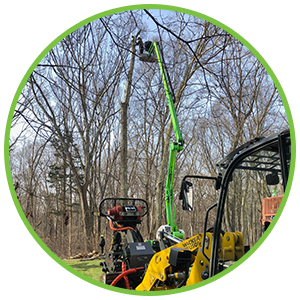Forest cultivating is the development of high-esteem forest yields under a Tree Surgeons Essex that is purposely changed or kept up to give conceal levels and environment that blessing development and upgrade creation levels. Wood cultivating envelops a scope of developed frameworks from bringing plants into the understory of lumber remain to adjust backwoods stands to improve the attractiveness and economical creation of existing plants.

Forest cultivating is a kind of agroforestry practice portrayed by the “four I’s”: deliberate, incorporated, escalated and intuitive. Agroforestry is a land board framework that joins trees with yields or domesticated animals, or both, on a similar real estate parcel. It centers around expanding advantages to the landowner just as keeping up backwoods uprightness and ecological wellbeing. The training includes developing non-lumber forest items or specialty crops, some of which, for example, ginseng or shiitake mushrooms, can have high market esteem.
History of tree cultivating :
Forest cultivating, however not generally by that name, is drilled all throughout the planet. For quite a long time, people have depended on natural products, nuts, seeds, portions of foliage and cases from trees and bushes in the timberlands to take care of themselves and their domesticated animals. Over the long run, certain species have been chosen for development close to homes or domesticated animals to give food or medication. For instance, in the southern United States, mulberry trees are utilized as a feedstock for pigs and frequently developed close to pig quarters.
Administrations of tree cultivating :
Woods cultivating strategies may include: Intensive, yet cautious diminishing of overloaded, stifled tree stands; numerous incorporated passages to achieve diminishing so fundamental stun is limited; and intelligent administration to keep a cross-part of solid trees and bushes, everything being equal, and species. Actual aggravation to the encompassing region ought to be limited. Coming up next are forest cultivating strategies portrayed in the Training Manual created by the Center for Agroforestry at the University of Missouri.
Level of the board required
- Forest cultivating is the most serious of backwoods cultivating techniques. As well as diminishing the overstory, this technique includes clearing the understory of unwanted vegetation and different practices that are firmly identified with agronomy (culturing, treatment, weeding, and control of infection and bugs and natural life of the executives). Because of info levels, this technique regularly creates lower esteemed items contrasted with different strategies. Woods gardens exploit the upward degrees of light accessibility and space under the timberland covering with the goal that beyond what one harvest can be developed without a moment’s delay whenever wanted.
- Wild-reenacted looks to keep a characteristic developing climate, yet advances nearby NTFP populaces to make a plentiful inexhaustible inventory of the items. Negligible aggravation and common developing conditions guarantee items will be comparable apparently and nature of those gathered from nature. Maybe then till, specialists regularly rake leaves to uncover soil, plant seed straightforwardly onto the ground and afterward cover with leaves once more. Since this technique produces NTFPs that intently look like wild plants; they regularly command a more exorbitant cost than NTFPs created utilizing the forest cultivating strategy.
- Backwoods tending includes changing tree crown thickness to control light levels that favor characteristic multiplication of alluring NTFPs. This low force the board approach doesn’t include supplemental planting to build populaces of wanted NTFPs.
- Wildcrafting is the collection of normally developing NTFPs. It isn’t viewed as a timberland cultivating practice since there is no human association in the plant’s foundation and support. Notwithstanding, wildcrafters regularly find ways to ensure NTFPs in light of future harvests. It becomes agroforestry once forest thinnings, or different data sources, are applied to support or keep up plant populations that may somehow surrender to successional changes in the timberland. The main contrast between forest cultivating and wildcrafting is that timberland cultivating deliberately delivers NTFPS, while wildcrafting looks for and assembles from normally developing NTFPs.




